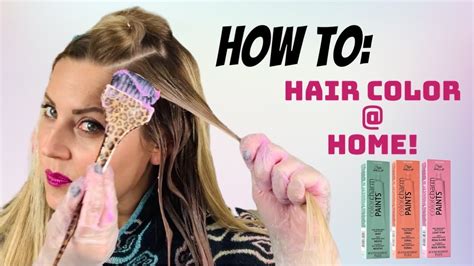Introduction
Hair color application is an art form that can transform your look, boost your confidence, and express your unique personality. With endless color options and techniques to choose from, the possibilities are limitless. This comprehensive guide will delve into the world of hair color application, empowering you with the knowledge to achieve your desired shade.

Understanding Your Hair Type
Before you embark on your hair color journey, it’s essential to understand your hair type. Different hair types respond differently to color treatments, so it’s crucial to choose a formula and technique that will enhance your hair’s natural characteristics.
| Hair Type | Characteristics |
|---|---|
| Fine hair | Thin, delicate strands that can be prone to damage |
| Medium hair | Average thickness and texture, suitable for most color treatments |
| Thick hair | Coarse, dense strands that require more color to achieve desired results |
| Curly hair | Spiraled or coiled strands that can absorb color unevenly |
| Bleached hair | Previously lightened hair that requires careful color application to avoid brassiness |
Choosing the Right Color
Selecting the right hair color is a crucial step. Consider your skin tone, eye color, and desired overall look.
- For warm skin tones: Golden, honey, and auburn shades complement warm undertones.
- For cool skin tones: Ashy, platinum, and blue-black shades enhance cool undertones.
- For neutral skin tones: Any color can flatter neutral undertones, but brown, blonde, and red shades are particularly flattering.
Color Techniques
Numerous hair color techniques can create various effects. Here are some popular options:
- Demi-permanent color: A gentle option that lasts 8-12 washes and gradually fades.
- Permanent color: A long-lasting option that requires regular root touch-ups.
- Highlights: Lighter sections of hair that create dimension and brighten the overall look.
- Lowlights: Darker sections of hair that add depth and contrast.
- Balayage: A freehand painting technique that creates a subtle, sun-kissed effect.
- Ombré: A gradual transition from one hair color to another, creating a sophisticated and modern look.
Application Process
- Prepare your hair: Wash and dry your hair to remove any product buildup.
- Protect your skin: Use a barrier cream to prevent stains on your hairline.
- Mix the color: Follow the manufacturer’s instructions for mixing the color and developer.
- Apply the color: Apply the mixture to your hair, starting at the roots and working your way to the ends.
- Process the color: Leave the color on for the recommended time, as per the instructions.
- Rinse and condition: Rinse your hair thoroughly and apply conditioner to restore moisture.
Aftercare
Maintaining your new hair color is essential for preserving its vibrancy and health.
- Use color-safe products: Choose shampoos, conditioners, and styling products specifically formulated for color-treated hair.
- Protect your hair from heat: Use a heat protectant spray before styling to prevent damage caused by heat tools.
- Avoid chlorine: Swimming in chlorinated water can strip hair of color, so wear a swim cap or rinse your hair with fresh water after swimming.
- Get regular trims: Regular trims remove split ends and keep your hair looking healthy and vibrant.
Tips and Tricks
- Test the color first: Apply the color to a small section of hair before applying it to your entire head.
- Start with a lighter shade: If you’re unsure about which shade to choose, opt for a lighter one; you can always darken it later.
- Use a brush for precision: Apply the color using a brush for more precise application and to avoid staining your skin.
- Check the development time regularly: Monitor the color development every few minutes to avoid over-processing, which can damage your hair.
Common Mistakes to Avoid
- Using cheap or expired products: Low-quality or expired products can cause uneven results and damage your hair.
- Over-processing: Leaving the color on for longer than recommended can severely damage your hair.
- Not neutralizing brassiness: Use a blue or purple toner to neutralize unwanted yellow or orange undertones.
- Not following the instructions carefully: Read the manufacturer’s instructions thoroughly and follow them precisely to achieve optimal results.
Key Statistics
- According to a survey by the American Academy of Dermatology, 75% of women in the United States have colored their hair at some point in their lives.
- The global hair color market is estimated to reach $31.5 billion by 2025, driven by growing demand for professional and home hair coloring products.
- Studies indicate that hair color can significantly influence a person’s self-esteem and overall confidence.
Conclusion
Hair color application is a versatile and transformative process that can enhance your appearance and empower you to express your individuality. By understanding your hair type, choosing the right color and technique, and following proper application and aftercare procedures, you can achieve the perfect shade for your unique style. Remember to consult with a professional hairstylist for personalized advice and to avoid potential pitfalls. Embrace the world of hair color and let it unleash your inner radiance!
